Ensuring your newborn gets the best sleep is a top priority for every parent. The right sleeping position can promote your baby’s health, improve their comfort, and reduce the risk of sleep-related issues. But with so many options and recommendations, it can be overwhelming to know the safest and most effective sleep positions for your baby. This guide covers everything you need to know about the best sleep positions for newborns, from managing common issues like reflux and congestion to advice from health professionals on creating a safe sleep environment.
Why Sleep Position Matters for Newborns
When it comes to newborns, sleep position is crucial not only for comfort but also for safety. The American Academy of Pediatrics (AAP) and other health organizations emphasize safe sleep practices to reduce the risk of Sudden Infant Death Syndrome (SIDS). The most important factors in ensuring a safe sleep environment for your newborn include:
- Placing your baby on their back to sleep
- Avoiding soft bedding, pillows, and stuffed animals
- Creating a firm sleep surface
With these guidelines in mind, let’s explore the best sleep positions for newborns based on expert recommendations and health conditions.
The Best Sleep Position for Newborns: Back to Sleep
1. Best Sleep Position for Newborn Baby: On Their Back
According to the latest infant sleep position recommendations, the safest position for a newborn to sleep is on their back. Sleeping on the back significantly reduces the risk of SIDS, which is the sudden and unexplained death of an infant under one year of age. Whether your baby is one month old, two months old, or older, this sleep position is always the safest.
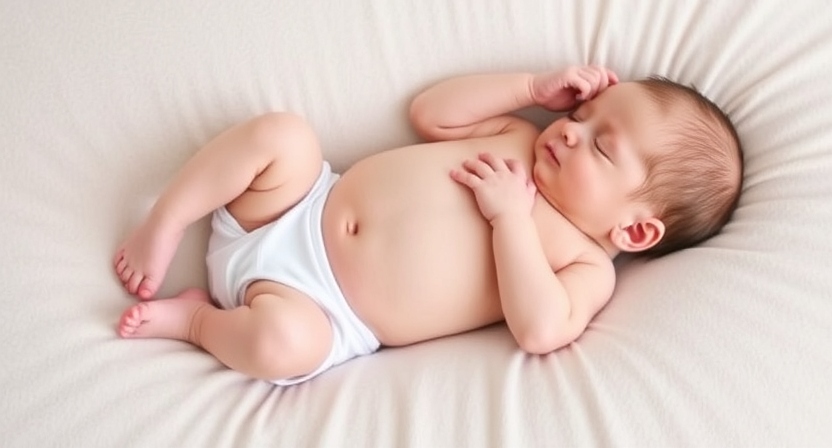
2. Best Sleeping Position for Baby at Night: On a Firm Mattress
To ensure the safety of your baby during sleep, use a firm crib mattress. Avoid soft mattresses, pillows, and blankets that could pose a suffocation risk. The best sleep position for newborns remains on their back, in a crib with no other items, creating a safe sleeping environment.
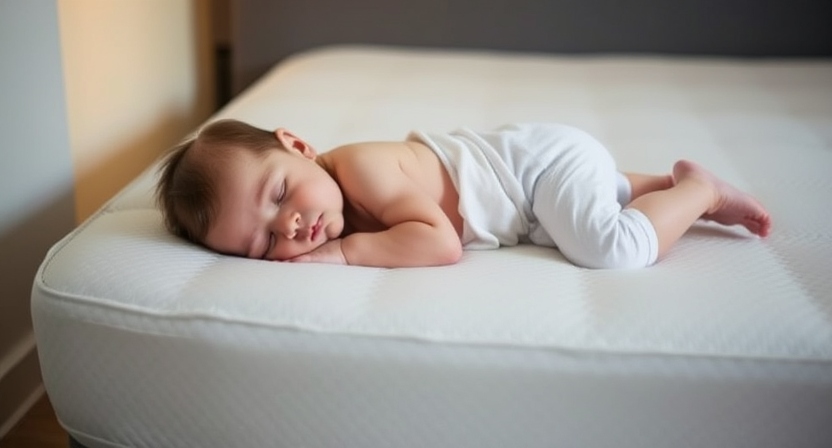
Sleep Position After Feeding: Best Positions for Comfort and Digestion
Many parents wonder about the best sleep position for a newborn after feeding, especially after breastfeeding or bottle-feeding. The right position can help your baby digest milk properly, reduce discomfort, and promote peaceful sleep.
3. Best Sleeping Position for Newborn After Feeding: Upright for a Short Time
After feeding, keeping your baby in an upright position for about 20 to 30 minutes can help minimize the risk of reflux and aid digestion. This is particularly important for babies prone to gassy baby breastfed or those suffering from acid reflux or silent reflux.
- Best Sleep Position for Newborn After Feeding Breastfeeding: Holding your baby in a vertical position or slightly reclined can help prevent milk from coming back up, which is common in babies with reflux.
- Best Sleep Position for Baby With Reflux: Babies with reflux often do better sleeping slightly elevated. You can raise the head of the crib mattress (a crib wedge) slightly to prevent milk from rising into the esophagus.
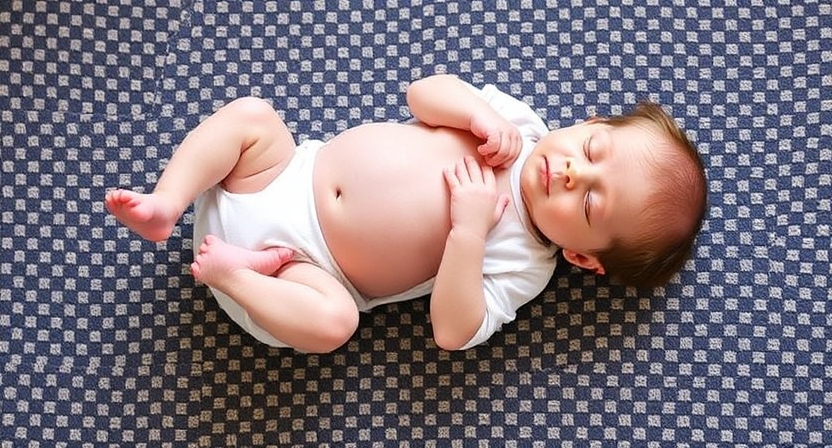
4. Best Sleeping Position for Baby With Gas or Colic
If your baby has trapped wind or is dealing with colic, a gentle tummy massage or holding them in an upright position can provide relief. After feeding, placing your baby in a side-lying or on-the-belly position for a brief time can help alleviate discomfort, but always return them to their back once the discomfort subsides.
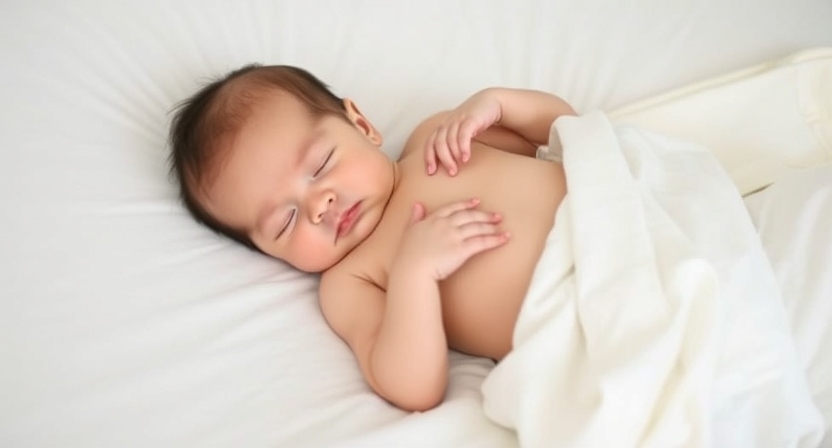
Sleep Positions for Babies with Health Conditions
Some babies experience specific health concerns that require careful attention to their sleep position. Here are some recommendations for babies dealing with conditions like a stuffy nose, cough, reflux, or bronchiolitis.
5. Best Sleep Position for Baby with Stuffy Nose or Congestion
Babies with nasal congestion, blocked noses, or post-nasal drip may benefit from sleeping with their head slightly elevated. This helps to keep the nasal passages clear and makes breathing easier.
- Best Sleeping Position for Baby With Blocked Nose: A slight incline (around 30 degrees) may help babies breathe more easily while sleeping. Always ensure they are still lying on their back.
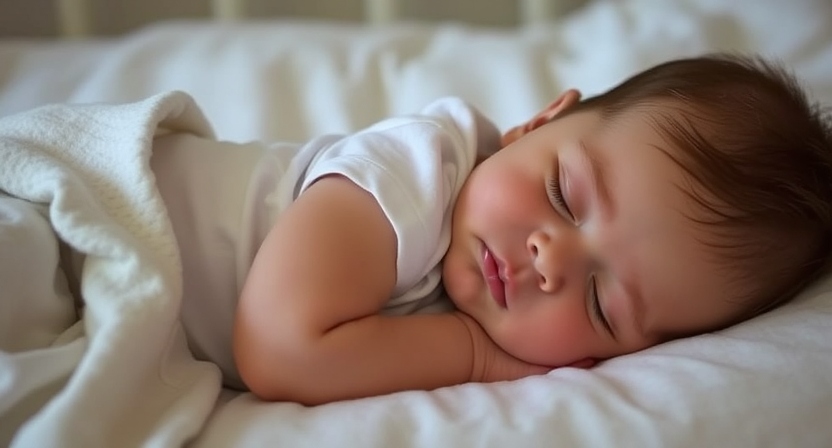
6. Best Sleep Position for Newborn with Cold or Flu
When your baby has a cold, it’s important to maintain the back-to-sleep position, even if they have a runny nose. Elevating the head of the crib slightly can provide comfort and help them breathe more easily while they rest.
- Best Sleeping Position for Baby With Fever: Keep your baby on their back, ensuring that they are not overheated by using light blankets and maintaining a comfortable room temperature.
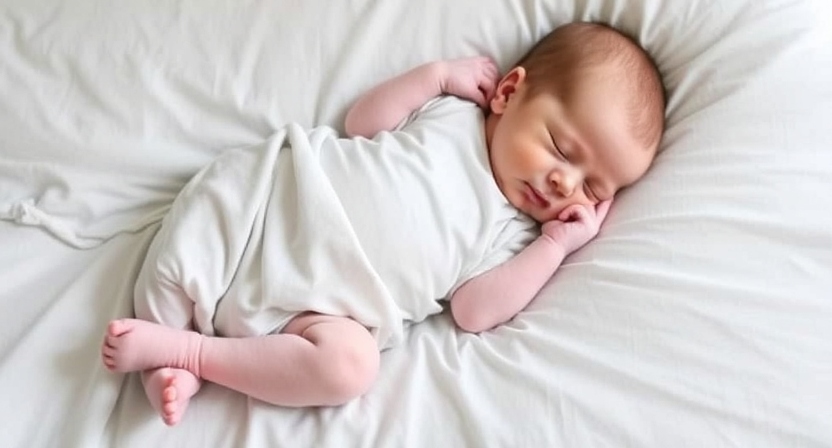
7. Best Sleeping Position for Baby With Bronchiolitis or RSV
For babies with respiratory illnesses like bronchiolitis or RSV (Respiratory Syncytial Virus), it’s essential to ensure they are not lying flat on their back during sleep. A slightly elevated position can help ease breathing and prevent mucus build-up in the airways. Be sure to consult your pediatrician for specific advice based on your baby’s condition.

8. Best Sleeping Position for Baby with Reflux
For babies with acid reflux or GERD (Gastroesophageal reflux disease), sleeping on their back remains the safest position. However, keeping the crib mattress slightly elevated can help prevent reflux episodes.

How to Position Your Newborn to Sleep: General Tips
Beyond specific conditions, here are some general sleep tips for getting your newborn to sleep safely and soundly:
- Create a Safe Sleep Environment: Place your baby on their back to sleep in a crib that is free from blankets, pillows, and stuffed animals. A firm mattress is best for a safe and restful sleep.
- Avoid Side Sleeping: Although side sleeping was once considered acceptable, recent guidelines show that side sleeping increases the risk of SIDS.
- No Co-Sleeping: The safest sleep position for a newborn is in their own crib or bassinet, placed in the same room as the parents. Co-sleeping (sleeping in the same bed as your baby) can lead to suffocation risks, so it’s best avoided.
Conclusion: Best Sleep Position for Your Newborn
Ensuring your newborn has a safe and comfortable sleep is one of the most important aspects of parenting. The best sleep position for newborns is always on their back, placed on a firm mattress in a crib free of soft bedding. For babies with specific health concerns like congestion, reflux, or colic, slight adjustments—such as raising the head of the crib—can provide added comfort. Always follow infant sleep position recommendations from trusted sources like the AAP and your pediatrician to ensure the safest sleep environment for your baby.
By understanding your baby’s sleep needs and health conditions, you can help your newborn get the restful and safe sleep they need for healthy growth and development.
FAQs:
- What is the best position for a newborn to sleep?
The safest position for a newborn to sleep is on their back. Always ensure your baby sleeps on a firm mattress in their own crib. - Can I let my newborn sleep on their side?
No, side sleeping is not recommended due to the increased risk of SIDS. Always place your baby on their back to sleep. - How should I put my newborn to sleep after feeding?
After feeding, it’s best to hold your baby upright for 20-30 minutes to reduce the risk of reflux. Once they are comfortable, place them on their back to sleep. - What if my baby has a cold or stuffy nose?
Elevate the head of your baby’s crib slightly to help with breathing, but ensure they are still lying on their back. Consult your pediatrician if symptoms persist. - Is it safe for my baby to sleep on their stomach?
No, stomach sleeping is not safe for newborns and increases the risk of suffocation and SIDS. Always place your baby on their back to sleep.